Understanding of pH potatoes is crucial for farmers, as it directly influences the overall well-being of potato crops. You can ensure healthy plant growth, lush foliage, and amazing tuber yields by adjusting your soil’s pH to meet the particular necessity of potato cultivars.
This guide will arm you with the knowledge of 5 different potato kinds that do best in particular pH ranges as well as the relationship between your body and potatoes’ pH. Let’s get started!
Contents
The Best Soil For Potato Crop
Planting potatoes is highly dependent on the soil conditions for its growth and success. The best soil conditions for planting potatoes are as follows:
- Soil Type: Plant seed potatoes in loose, well-drained soil rich in organic matter, such as sandy loam or loamy soil.
- pH Level: For optimum nutrient availability and avoidance of diseases, aim for a pH range of 5.0 to 6.0, which is slightly acidic to neutral.
- Structure of the Soil: Potatoes prefer friable, loose soil because it promotes healthy root and tuber development.
- Organic Matter: Adding well-rotted compost, aged manure, or leaf mold improves soil structure, water retention, and nutrient content.
- Drainage: Ensure proper drainage to prevent waterlogging and associated problems like diseases and root rot.
- Nutrient Content: Potatoes require nutrient-rich soil, so incorporate a balanced fertilizer or organic alternative before planting.
- Soil Moisture: Maintain consistent soil moisture levels through irrigation and mulching to support healthy growth.
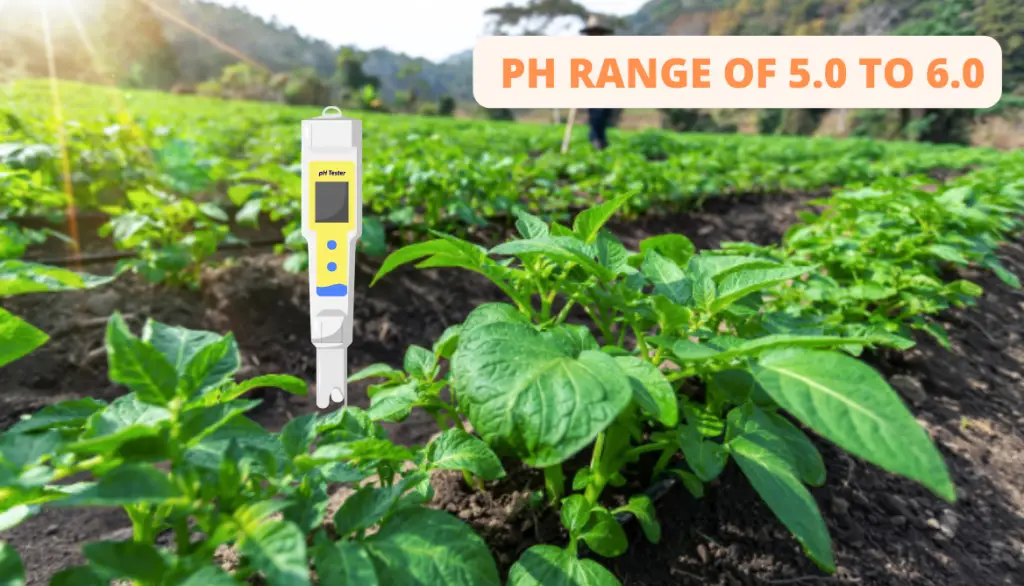
The Ideal Soil pH Potatoes for Planting
The optimum soil pH for potato planting is between 5.0 and 6.0. Potatoes thrive in mildly acidic to neutral soil conditions.
- It’s important to maintain the pH within this range to ensure optimal nutrient availability, prevent common diseases like scabs, and promote the healthy growth of potato plants.
- Alkaline soils, which have a pH above 7.0, may not be suitable for potatoes as they can impact the plant’s growth and nutrient availability.
- In strongly alkaline soils, aluminum becomes more soluble and can reach toxic levels for plants like potatoes.
- Conducting a soil test can help determine the current soil pH level and allow for any necessary amendments to achieve the desired pH range for successful potato cultivation.
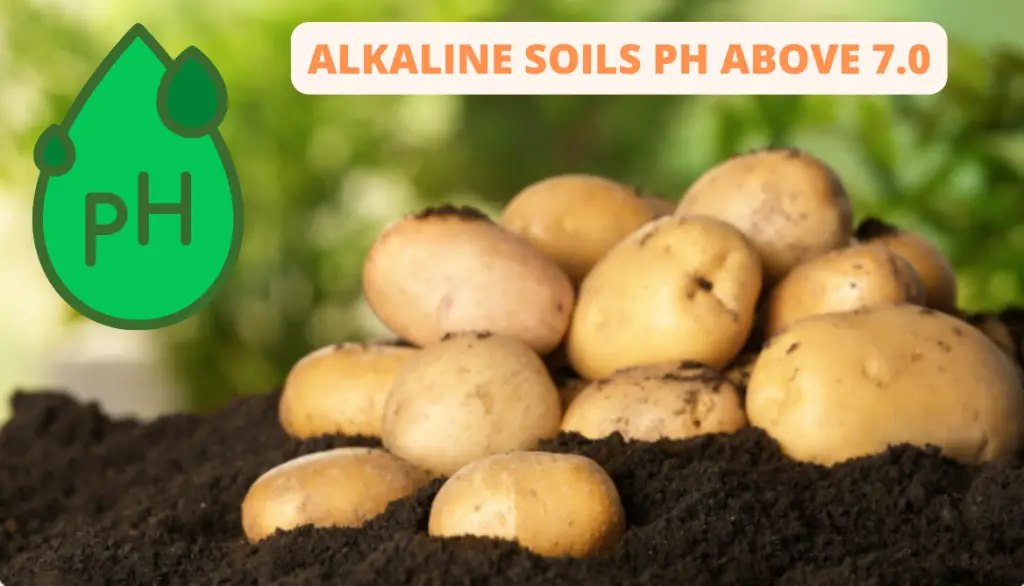
Types of Potatoes with the Best pH
Potatoes are mildly acidic food that comes in various varieties, each with its characteristics, including taste, texture, and pH level. Certain particular potato varieties may have slightly better pH levels than others, it’s important to keep in mind that potatoes typically have a pH that is close to neutral.
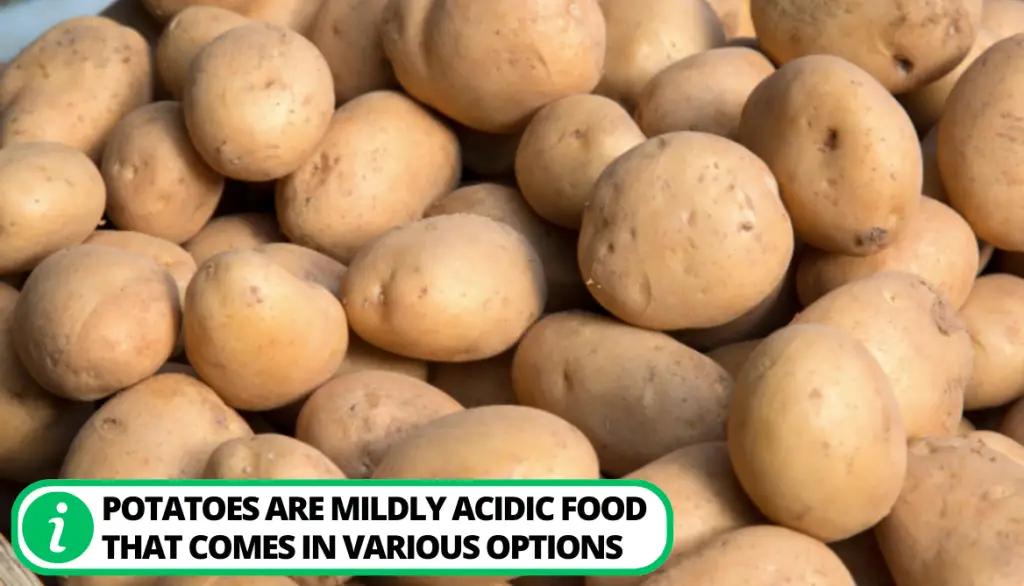
pH levels can vary slightly depending on growing conditions, here are some commonly available potato varieties and their typical pH levels:
1. Russet Potatoes
These potatoes are large, starchy potatoes with a fluffy texture. They are commonly used for baking, french fries, and mashed potatoes. They tend to have a slightly higher pH level, usually ranging from 5.4 to 6.0.
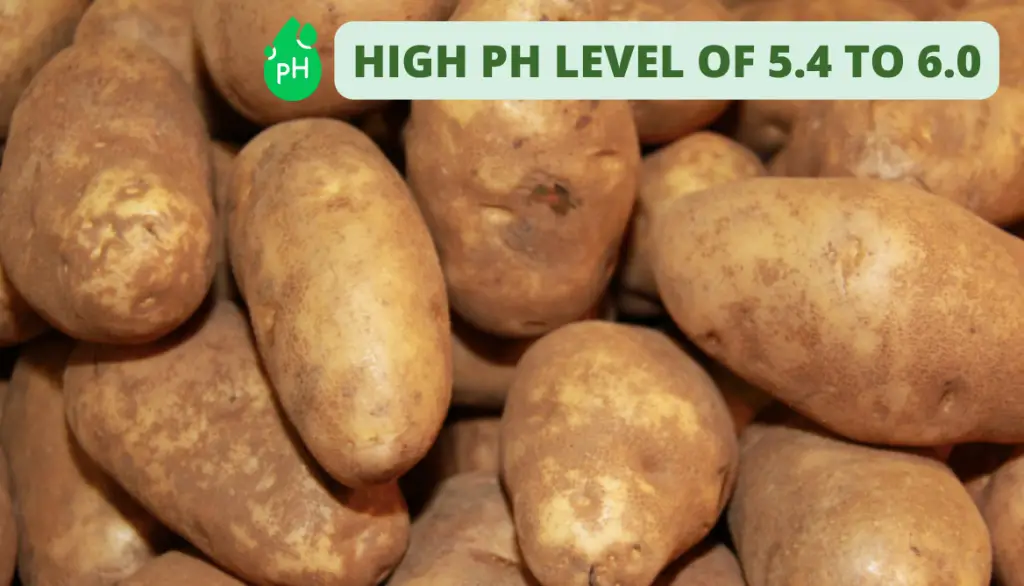
2. Red Potatoes
They are smaller and have thin, smooth red skin. They have a firm, waxy texture and are often used in salads, roasting, or boiling. These potatoes typically have a slightly lower pH level ranging from 5.0 to 5.4.
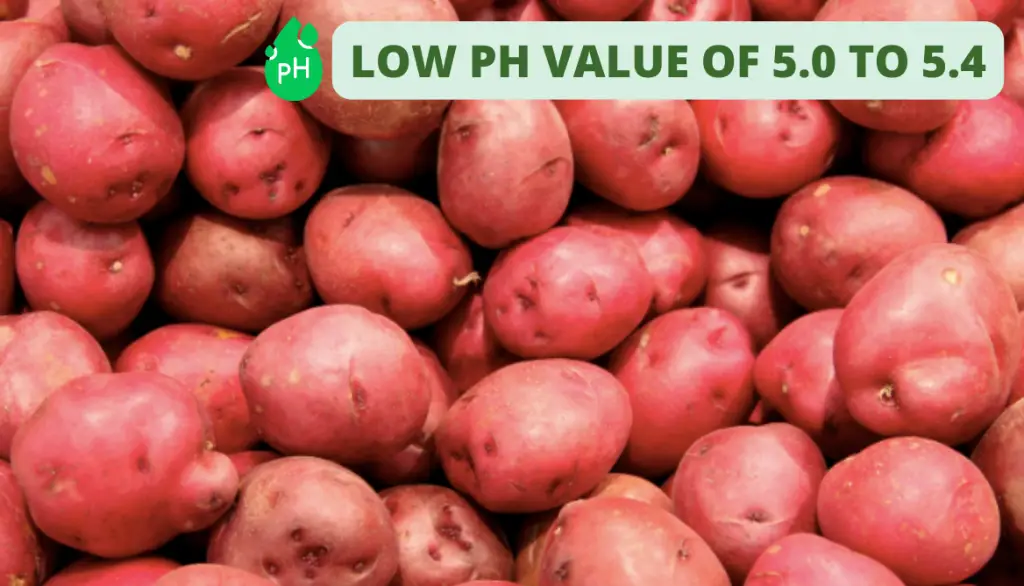
3. Yellow Potatoes
Also referred to as Yukon Gold potatoes, have a creamy texture and a rich, buttery flavor. They are versatile and can be boiled, mashed, roasted, or used in soups and stews. Yellow potatoes generally have a mildly acidic level ranging from 5.0 to 5.4.
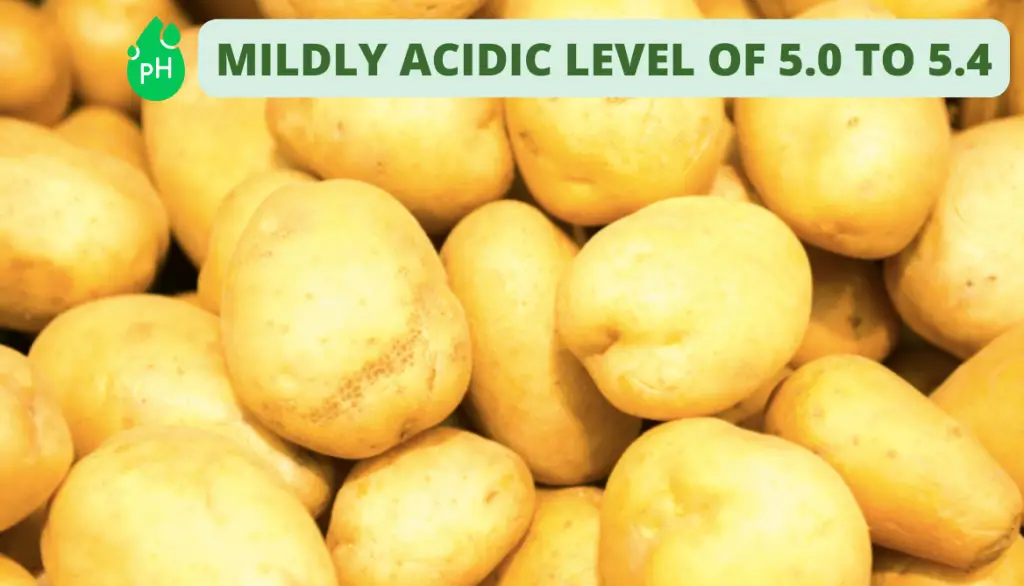
4. White Potatoes
They have smooth skin and a mild, creamy flavor. They have a moist texture and are suitable for boiling, mashing, or making potato salads. White potatoes typically have a pH level ranging from 5.4 to 6.0.
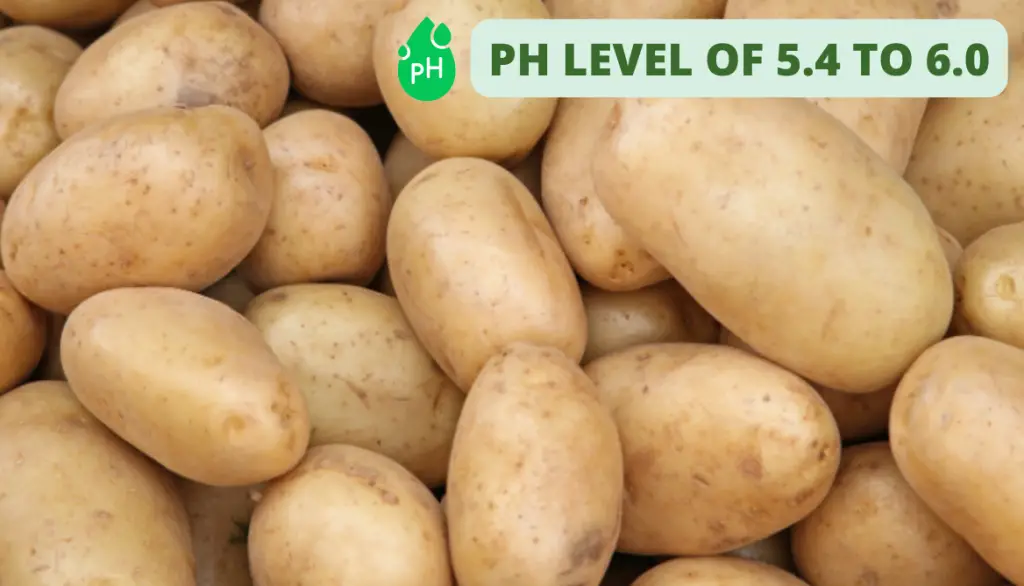
5. Fingerlings
They are small, elongated potatoes with a waxy texture. They come in various colors, including yellow, red, and purple. Fingerling potatoes are often roasted or used in salads. Their pH level is similar to that of red and yellow potatoes, ranging from 5.0 to 5.4.
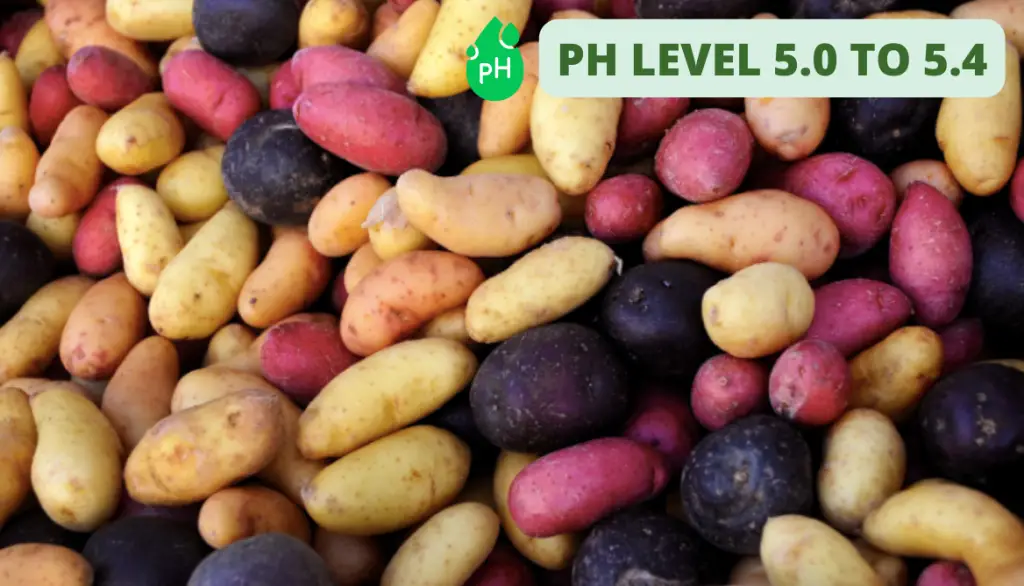
It’s worth noting that pH levels can vary depending on factors such as soil composition, growing conditions, and the specific variety within each potato type.
Soil for Growing Potatoes in Containers
When growing potatoes in containers, it’s crucial to choose the right soil to provide the necessary nutrients, drainage, and aeration. Here are some of the best soil options for growing potatoes in containers:
1. Potting or Container Mix
A high-quality container mix is good to plant potatoes in containers. Potting mixes usually contain a blend of peat moss, perlite, vermiculite, and compost. These mixes provide good drainage and moisture retention to grow potatoes.
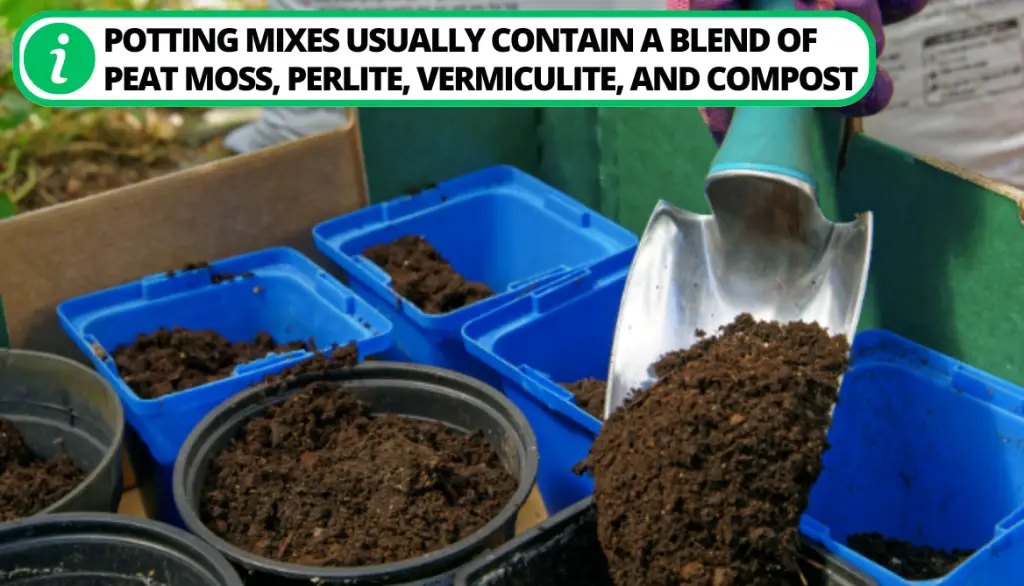
2. Loam-Based Soil
This soil is a balanced combination of silt, sandy soil, and clay soil, which provides good drainage and retains moisture without becoming waterlogged. It is a suitable option that ensures sufficient aeration and nutrient availability.
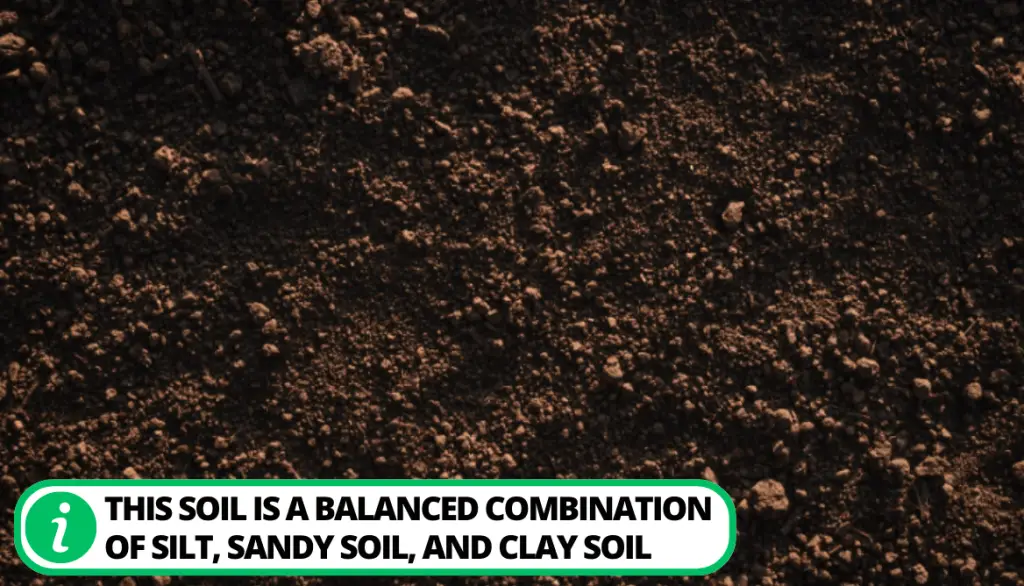
3. Compost-Enriched Soil
Mixing compost with regular potting soil or loam-based soil can enhance nutrient content and improve soil structure. Compost adds organic matter, which helps retain moisture and provides a steady release of nutrients to support potato growth.
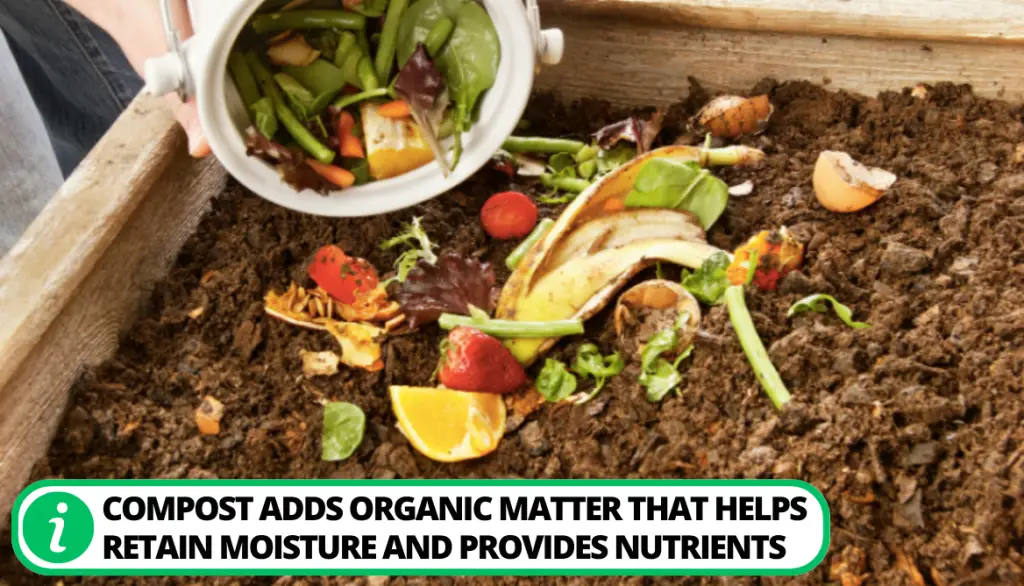
4. Raised Bed Mix
If you’re using a larger container or a raised bed specifically designed for growing potatoes, a raised bed mix can be an excellent choice. These mixes often contain a blend of compost, topsoil, peat moss, and other organic materials, promoting good drainage and nutrient availability.
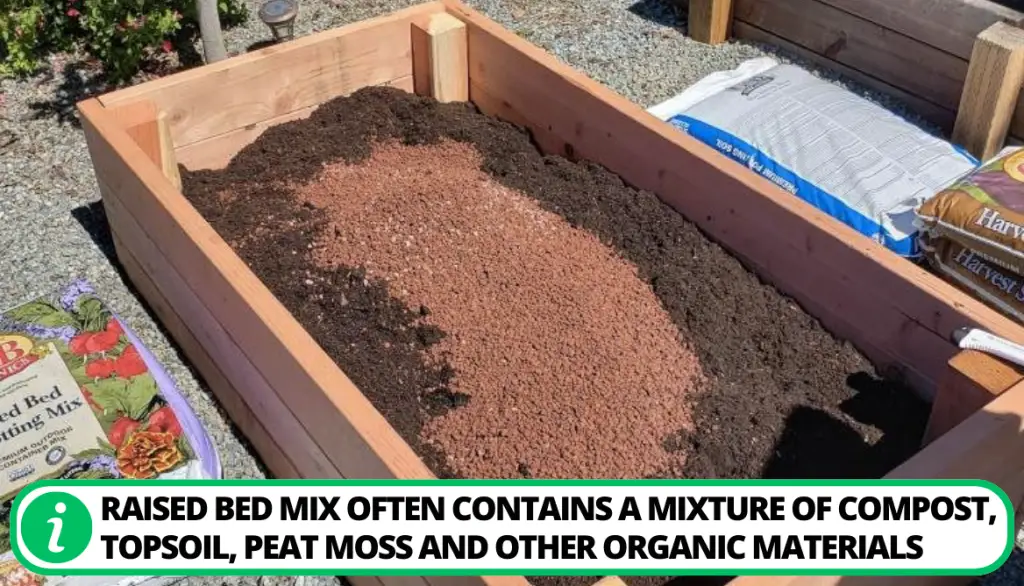
Tips To Put in Mind When Choosing Soil
It’s important to avoid using heavy garden soil or clay soil in containers, as they tend to compact and hinder proper root development and drainage.
- Additionally, using soil from your garden may introduce pests or diseases. Instead, opt for well-draining soil mixes that are lightweight and specifically formulated for container gardening.
- Also, Remember to water the potato plants regularly and provide adequate fertilization based on the needs of your specific potato variety.
Potato’s Acidic Content
Potatoes contain several organic acids such as malic acid, and citric acid, but oxalic acid is the most prevalent. These acids contribute to the overall flavor profile of potatoes and can vary slightly depending on the potato breed and maturity.
1. Oxalic Acid
In many fruits and vegetables, including potatoes, oxalic acid is a naturally occurring substance.
- It is a dicarboxylic acid that may help explain why potatoes have a mildly sour or acidic flavor.
- Other foods like spinach, rhubarb, and beet greens also contain oxalic acid.
- It’s important to note that potato contains only small amounts of oxalic acid, which is usually not harmful unless ingested in large amounts.

2. Malic Acid
Malic acid is another organic acid present in potatoes. It has a slightly tart taste and is also found in various fruits. Malic acid plays a role in the overall flavor balance of potatoes and can contribute to their characteristic taste.
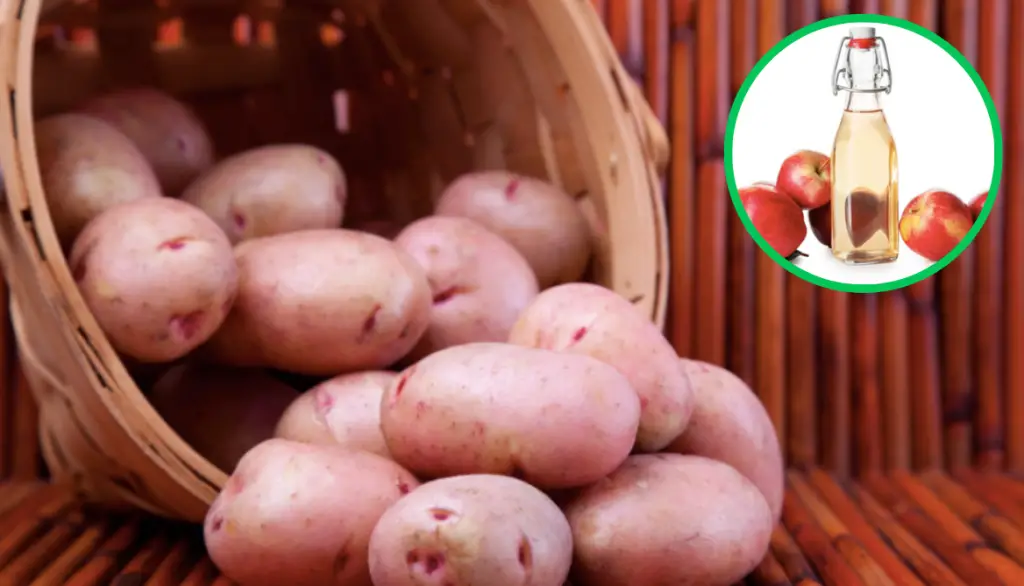
3. Citric Acid
One such acid found in potatoes is citric acid, which imparts a sour taste. Citric acid is commonly found in citrus fruits but is present in trace amounts in potatoes. It serves as a natural preservative and contributes to the acidity of the tubers.
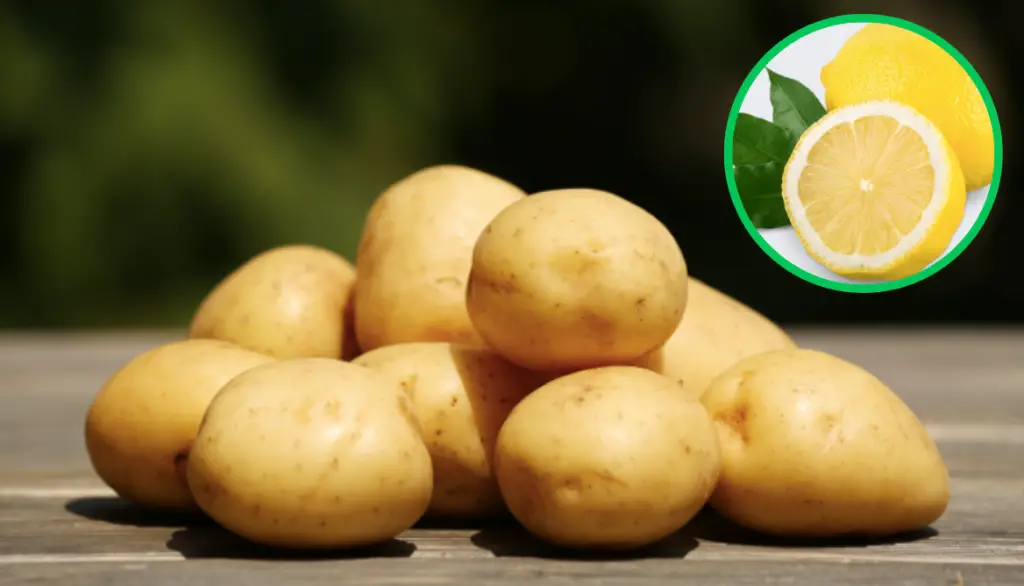
Your Body Chemistry and Potato pH
Let’s discuss the pH of potatoes and how they interact with the body’s pH balance.
The pH of potatoes typically ranges from 5.4 to 5.9, classifying them as mildly acidic. However, it’s important to note that the body’s pH balance is tightly regulated by the kidneys and lungs, and the pH of the foods we consume generally does not have a significant impact on blood pH.
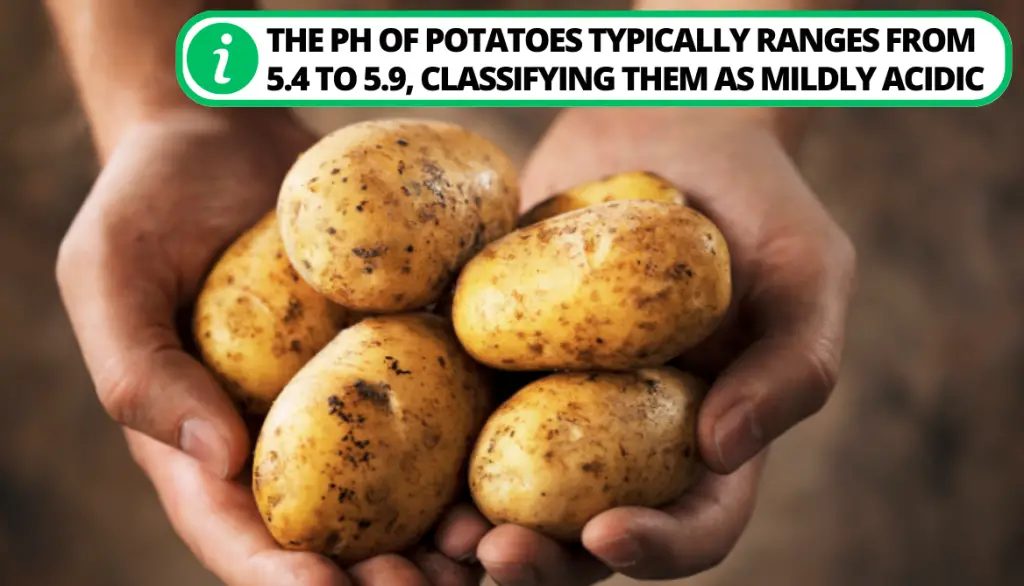
The Concept of Potato’s pH and Alkaline Diet
The concept of alkalizing foods is often associated with the potential renal acid load(PRAL). The pH scale measures the acidity or alkalinity of a substance, with values below 7 being acidic, 7 being neutral, and values above 7 being alkaline.
- The potential renal acid load is a method used to estimate the alkaline or acid load that food will have on the body after digestion.
- Positive PRAL values indicate an acid-forming potential, while negative values indicate an alkaline-forming potential.
- Potatoes contain relatively higher levels of alkaline minerals, particularly potassium, which contribute to their alkalizing effect. This means that after digestion, the overall impact of potatoes on the body’s pH is considered alkaline or less acidic.
The Connection Between Your Kidney, Potatoes, And Alkaline Diet
Potatoes are generally considered a high-potassium food.
- People with Chronic Kidney Disease often need to limit their potassium intake because impaired kidney function can lead to high levels of potassium in the blood, a condition called hyperkalemia.
- However, the potassium content in potatoes can be reduced significantly by proper preparation methods. Peeling, soaking, and boiling potatoes in water before cooking can help lower the potassium content.
- Sweet potatoes generally have high nutritional value because they are rich in vitamins, minerals, and dietary fiber.
- Sweet potatoes can be included as part of a well-balanced diet, including for individuals with chronic kidney disease, with consideration for portion sizes and overall nutrient intake.
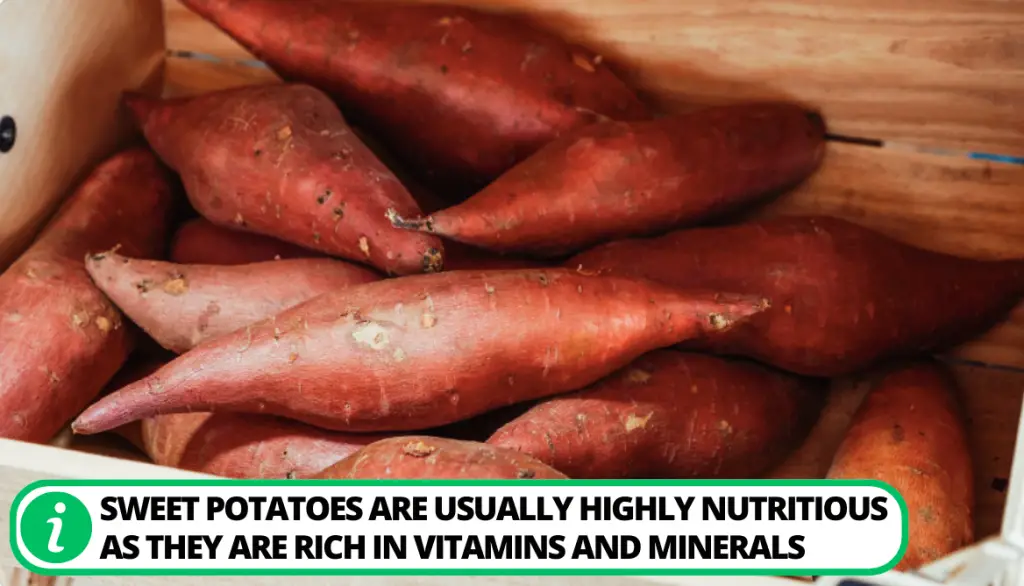
Potatoes, Alkaline Foods, and High Glycemic Diet
Potatoes, pH, alkaline food, and high glycemic diet are related concepts that have an impact on one another’s nutritional makeup and possibly physiological impacts. The rate at which a product containing carbohydrates raises blood sugar levels after eating is gauged by its glycemic index (GI).
Higher numbers indicate a faster and more significant increase in insulin levels. Potatoes can be considered alkaline foods, but their glycemic impact is relatively high. Also, Potatoes can be replaced with whole grains including brown rice, millet, etc.
FAQ
Are potatoes acidic or alkaline?
Potatoes are slightly acidic, not alkaline. The pH of a typical potato ranges from 5.3 to 5.8, making them mildly acidic.
How does pH affect potatoes?
The pH of potatoes affects their texture, with higher pH levels resulting in firmer potatoes, and lower pH levels leading to softer and more mushy potatoes.
Why are potatoes acidic?
Potatoes are acidic due to the presence of organic acids, particularly malic acid, and citric acid.
Conclusion
It is essential for efficient potato growing to understand the pH preferences of various potato species. Farmers can maximize plant health and productivity by regulating the soil pH to the range required for each variety of potato.
Understanding the connection between your body chemistry, the pH of your potatoes, an alkaline diet, kidney function, and a high glycemic diet can help you live a balanced, healthy existence.
What kind of soil are you going to use to plant your potatoes? Leave your answer in the comment section. Thanks for Reading.
- How to Get Potatoes to Sprout Eyes: Detailed Growing Guide with 3 Options - July 31, 2023
- Weight of a Medium Potato: Revealed in Detailed Guide - July 29, 2023
- Maris Piper Potatoes: 9 Substitutes You Should Know About - July 27, 2023
Hello! I’m Jessica Zander, a garden coach and consultant based in the Boston area (zone 6b), offering virtual consultations across the country and Canada.
I’ve been passionate about gardening since the early 1990s, and in 2022, I launched You Can Do It Gardening to empower individuals to feel more confident in their gardening endeavors.
Following a 30-year career in nonprofit finance and operations, I transitioned out of that field in mid-June of 2023 due to the growing demand for coaching services. Interestingly, my years of presenting financial statements to boards and finance committees proved to be valuable experience for teaching people about gardening! I enjoy sharing skills, providing guidance and suggestions, and collaborating efficiently with clients to make significant improvements to their outdoor spaces, both small and large. I also regularly teach at the Arlington Continuing Education and Cambridge Adult Education.
My approach is direct and practical, akin to Mary Poppins, but tailored to your garden. Clients find satisfaction in saving money and taking pride in their own gardening achievements.

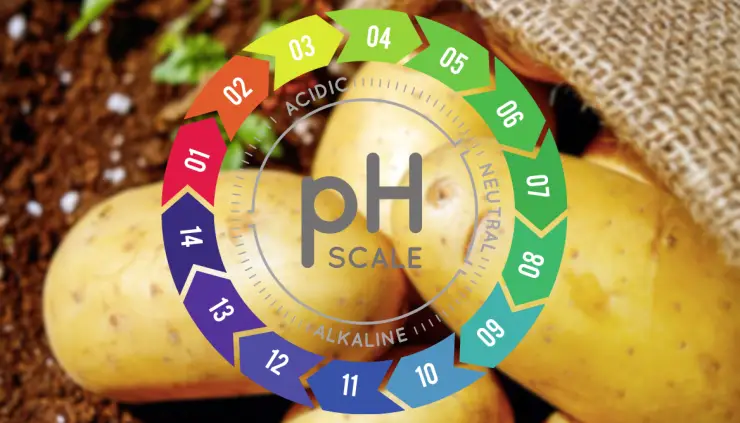

Add comment